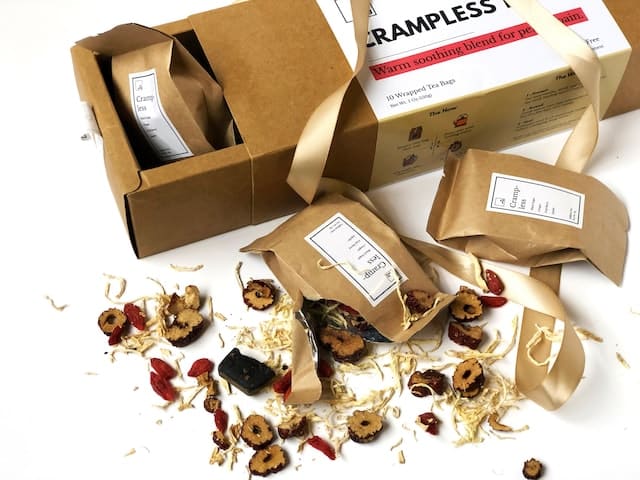Before the 20th century, the majority of the food was grown and eaten locally, so packaging wasn’t required. Luxury foods such as sugar were packaged in sacks or barrels. As the transportation of food became a necessity, packaging started to take on a central role in the food industry to ensure safe transit. The industrial revolution prompted many technological innovations; packaging designs advanced to include metal cans, cardboard boxes, and glass bottles. During the 21st century aluminum, foil, and plastic were invented and used for packaging. Modern food global supply chains involve great distances and multiple logistical considerations. Each stage in the food supply chain (production, processing, retail, and consumption) requires packaging to keep goods safe, reliable, shelf-stable, and clean.
Table of Contents
The introduction of plastic packaging
The introduction of plastic packaging had a dramatic impact on the food industry and completely changed the way we eat. Plastic was inexpensive, lightweight and durable and could be molded into any shape. Examples of the wide range of uses for plastic packaging include:
- Spice packets
- Crisp packets
- Sweet packets
- Condiment bottles
- Margarine tubs
- Rice packets
- Fruit cartons
- Multipacks of vegetables
- Styrofoam takeaway containers
Food could now be kept for longer, prepared in advance, and was available instantly (microwaveable ready meals).
How the invention of shrinkwrap revolutionised the food industry
The invention of shrinkwrap in the 1950s had a massive impact on the food industry. This film used heat to shrink around objects of any shape or size, including single or multiple food items (for example, multipacks of cans). Shrinkwrap has a plethora of desirable features:
- Secure (protects items from oxygen, dust, dirt, and microbes)
- Lightweight
- Cost-effective
- Waterproof
- Tamper-proof
- Safe for food use
- Resistant to extreme temperature changes
- Reduces fraud
- Transparency allows visibility of the product and improved aesthetics
- Glossy attractive appearance
- Can be printed on (nutritional data/customer information such as use by date/branding/advertising)
As well as allowing companies to increase their output and reduce discarded produce, the other widely touted advantage was that shrinkwrap dramatically reduced food waste by increasing product shelf-life. For example, shrinkwrap substantially increased the preservation of perishable items such as cucumbers, which have quite specific storage requirements(specific temperature and humidity) to keep them protected from shrivelling, colour change, and physical damage.
The environmental impact of food packaging
Historically, food packaging practices have been driven by practicalities and sales targets rather than waste reduction. A tendency towards requiring flexible and lightweight packaging has resulted in packaging which is incredibly difficult or impossible to recycle. The effects of food packaging on the environment, which include the toxic byproducts of the manufacturing process as well as packaging waste, are getting close to a global crisis. When you reuse a mylar bag, not only are you saving resources, but you’re also helping the environment by reducing your impact. Someone can find easily cheap mylar bags with custom logos for a fraction of the price.
As early as the 1960s, humans realised that plastic waste was polluting the ocean and landfill and initial attempts at recycling weren’t effective. Plastic breaks down into microplastics (super small pieces of plastic) that accumulate toxins and infiltrate food and water supplies. Any food packaging that cannot be recycled (either due to the material or the material being contaminated with food) ends up either being incinerated or going to a landfill. Both of these are hazardous to the environment (affecting climate change and wildlife biodiversity) and human health.
A leading justification for the use of single-use plastics in food packaging is that it plays a vital role in extending the shelf-life of food and consequently reducing food waste, especially if it has been applied by shrinkwrap packaging machinery. Current thinking recognises that food waste and food packaging waste are dual sustainability challenges. Unfortunately, a legacy of the COVID-19 pandemic is the increased use of single-use packaging to prevent the spread of infection. On-the-go lifestyles have also driven the use of single-use plastics (takeaway and online deliveries) as well as resulting in a higher risk of littering.
The introduction of sustainable shrinkwrap packaging
Increased awareness of climate change by businesses and consumers has led to the creation of environmentally friendly shrinkwrap packaging that is manufactured from renewable resources and can be recycled while also being fully compliant with ASTM standards and EC legislation. Sugarcane shrinkwrap comprises up to 51% sugarcane cellulose and is both durable and safe for use with food. Ultra-thin polyolefin shrink films also exist, which use less material than standard shrinkwrap, without compromising on strength or appearance. This means that a smaller number of resources are used to create it in the first place, and less waste material is produced if it isn’t recycled.
The future of food packaging
Food manufacturers big and small have started to look for more ecological solutions to their packaging needs and food retailers continue to come up with innovative solutions every day. Local initiatives such as package-free retailers (utilising refillable packaging) and farm box schemes demonstrate the potential to use reusable packaging or remove the need for packaging completely for some products. Consumer behaviour will drive further changes in the food industry to tackle the dual challenge of food waste and plastic waste, such as using edible packaging.


